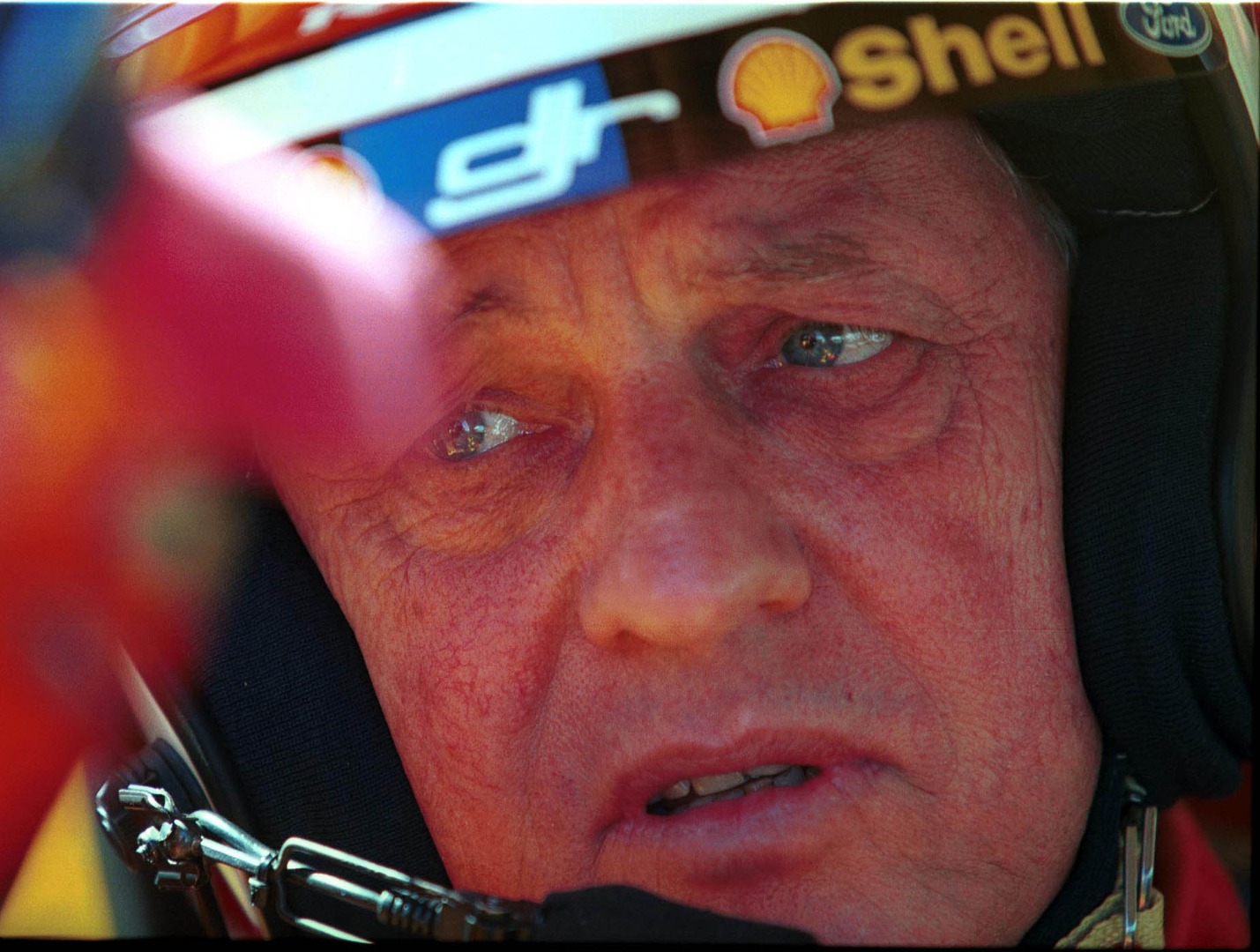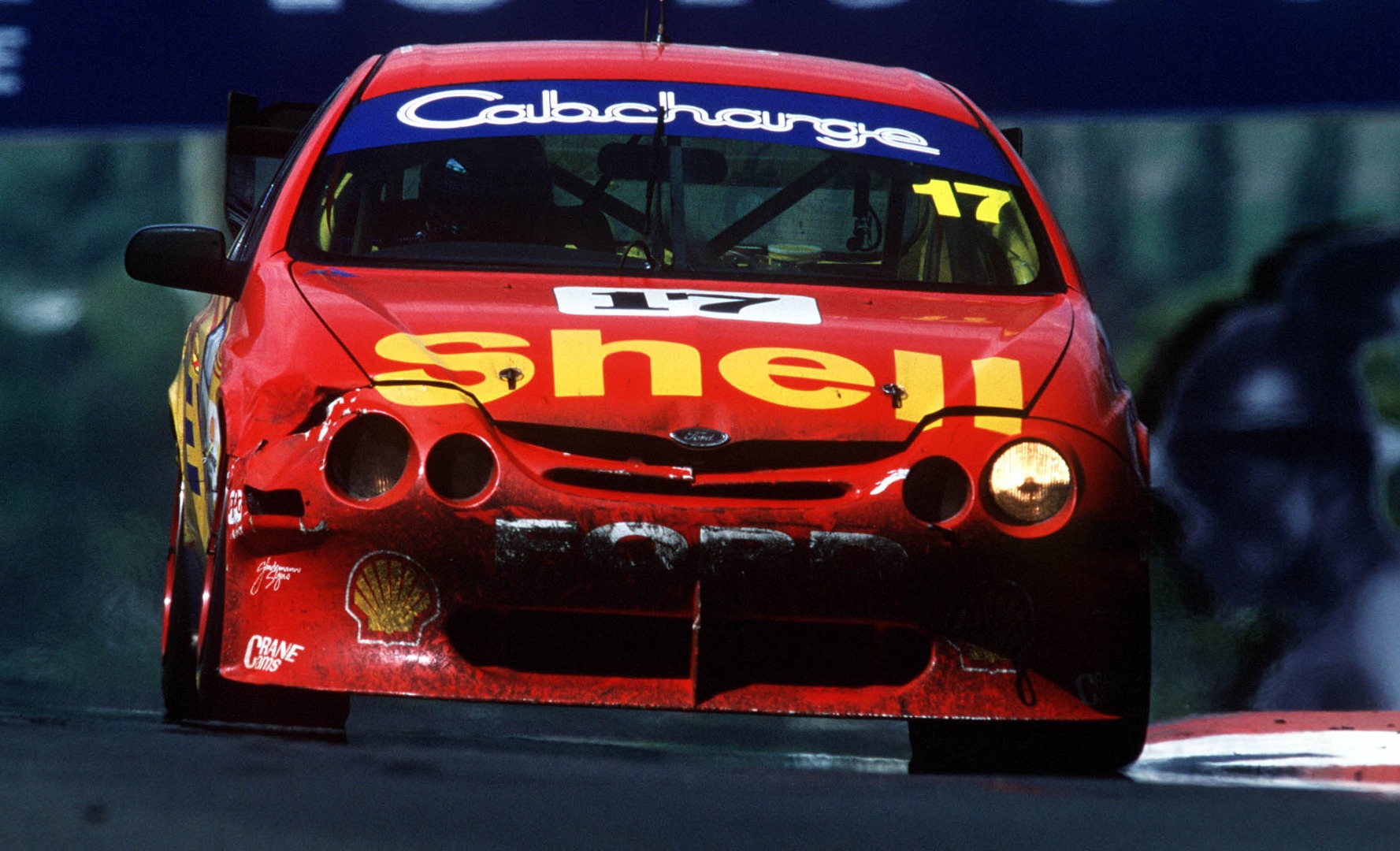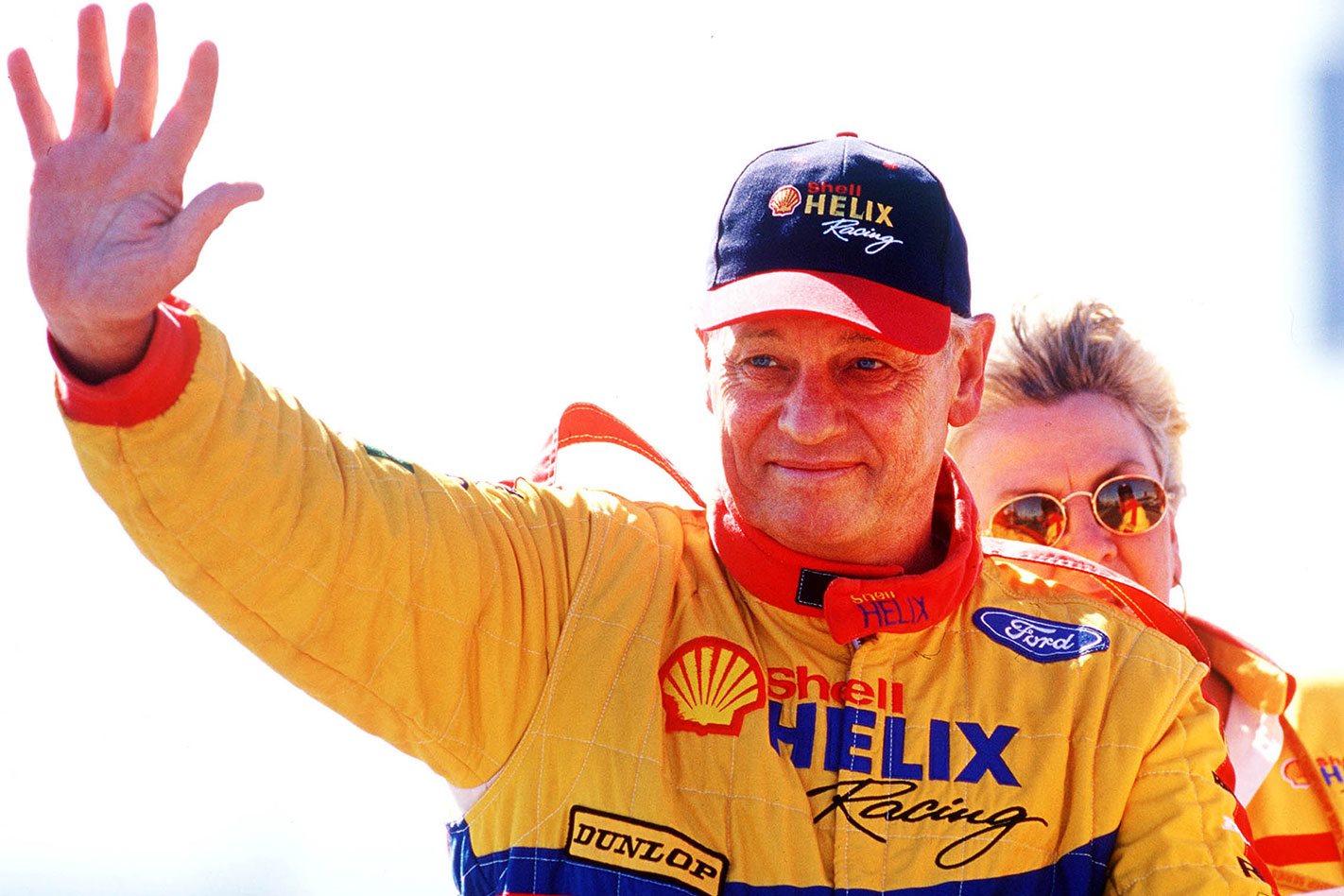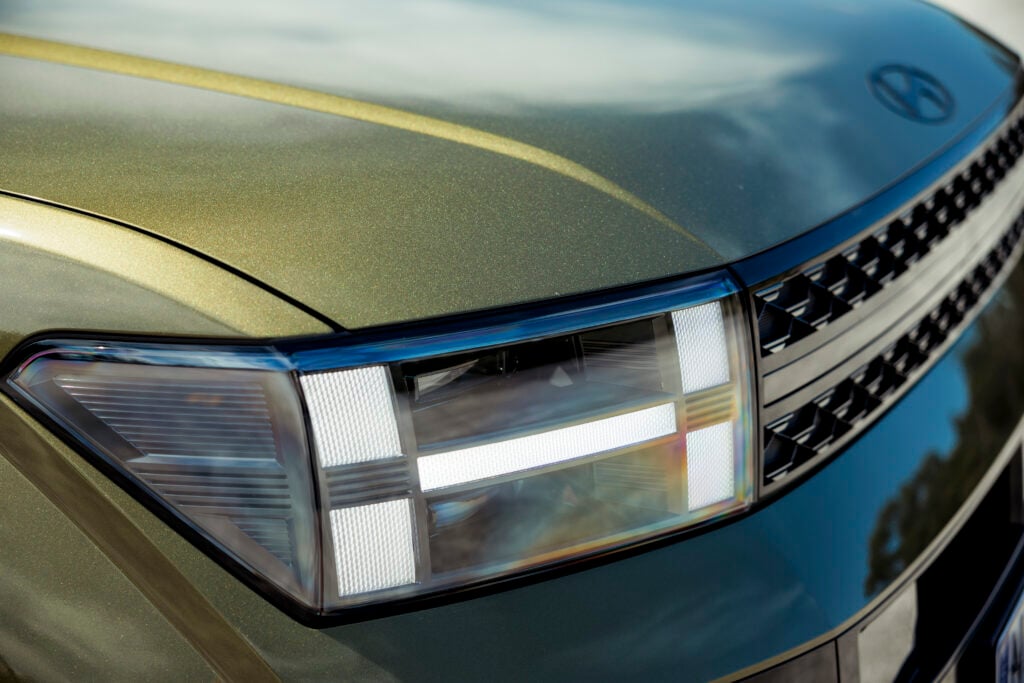Knowing retirement was just weeks away, Dick Johnson was keen to hose down the hype when he talked to then Wheels editor Ewen Page at the Mount Panorama circuit in October 1999.
Still, the optimist in him reckoned that, with son Steve as co-driver, their AU Falcon stood a fair chance in that year’s Bathurst 1000. “We’re realistically aiming to finish,” the 54-year-old Johnson told Page during an interview that would be the basis of a feature for the November 1999 issue. “I feel that the AU’s going to be a bloody good car there – I really do.”
The dream final win didn’t materialise – the Johnsons finished fourth, on the same lap as the winning Gibson Motor Sport Richards/Murphy VT Commodore – but their AU was the first Falcon home.
That Sunday, November 14, 1999, marked the end of a stellar career that saw Dick Johnson’s name reign with those of Peter Brock and Allan Moffat as the great motor-racing stars of the era.

Between Wheels’ January 1979 and January 2004 issues, Johnson featured significantly in 27 stories in the magazine. Some were profiles, such as Phil Scott’s insightful 1982 story, “From has-been to hero”, others were reports of races where Johnson starred. Which, as a three-time Bathurst winner and five-time Australian Touring Car Championship winner, was frequently.
The laconic Johnson was always excellent copy. “Winton? It’s like running a marathon around your clothesline,” he told Channel Seven commentator Mike Raymond in 1990.
Of Johnson’s famous one-on-one rivalry with Peter Brock, he told Page, “Frankly, I see we were an asset to each other, because I don’t think either of us would have gone as far without the other.
“I’m a realist and he’s a fairy-tale man. I can see that tree there and I say, ‘it’s growing in the ground and it’s green’, where I think there’s a lot of rose colours coming out of it with him. To beat the guy was all it was about, because he was the benchmark, and if you beat him, you beat the best.”
Phil Scott accurately captured the down-to-Earth Queenslander in his May 1982 story: “He talks like a normal Aussie should, likes a beer, builds his own cars and knows what it’s like to be short of a quid. In fact, he’s the bloke next door who thumbed his nose at the big-dollar teams and quietly had a go. All these things are true – to a point.”
Johnson, as his opponents quickly realised, was also a real professional; well-funded and organised and yet somehow easy to underestimate, perhaps because the Queensland-battler image persisted, despite the success.

Almost uniquely, Page managed to write a major Johnson story without mentioning the infamous rock that wrecked his Bathurst in 1980. On lap 17, leading a field that included Brock, Bartlett and Co by 30 seconds, Johnson’s Falcon hit a rock the size of an overnight bag, causing instant retirement.
A gutted Johnson believed he was ruined. But a TV appeal, matched by a donation from Edsel Ford II, then deputy MD of Ford Australia, netted Johnson over $70,000, and helped get the team back on its feet. Johnson, of course, became a national hero, and beloved battler, overnight.
Fast forward to 2014, and Johnson sold 51 percent of Dick Johnson Racing to legendary American motor-racing-team owner Roger Penske, changing the name to DJR Team Penske.
It was the first time Team Penske had expanded outside the USA since its days in Formula 1 between 1974-76.
Johnson continues to play an important role in what remains a hugely successful team, with lead driver Scott McLaughlin taking out the 2018 Supercars Championship.





